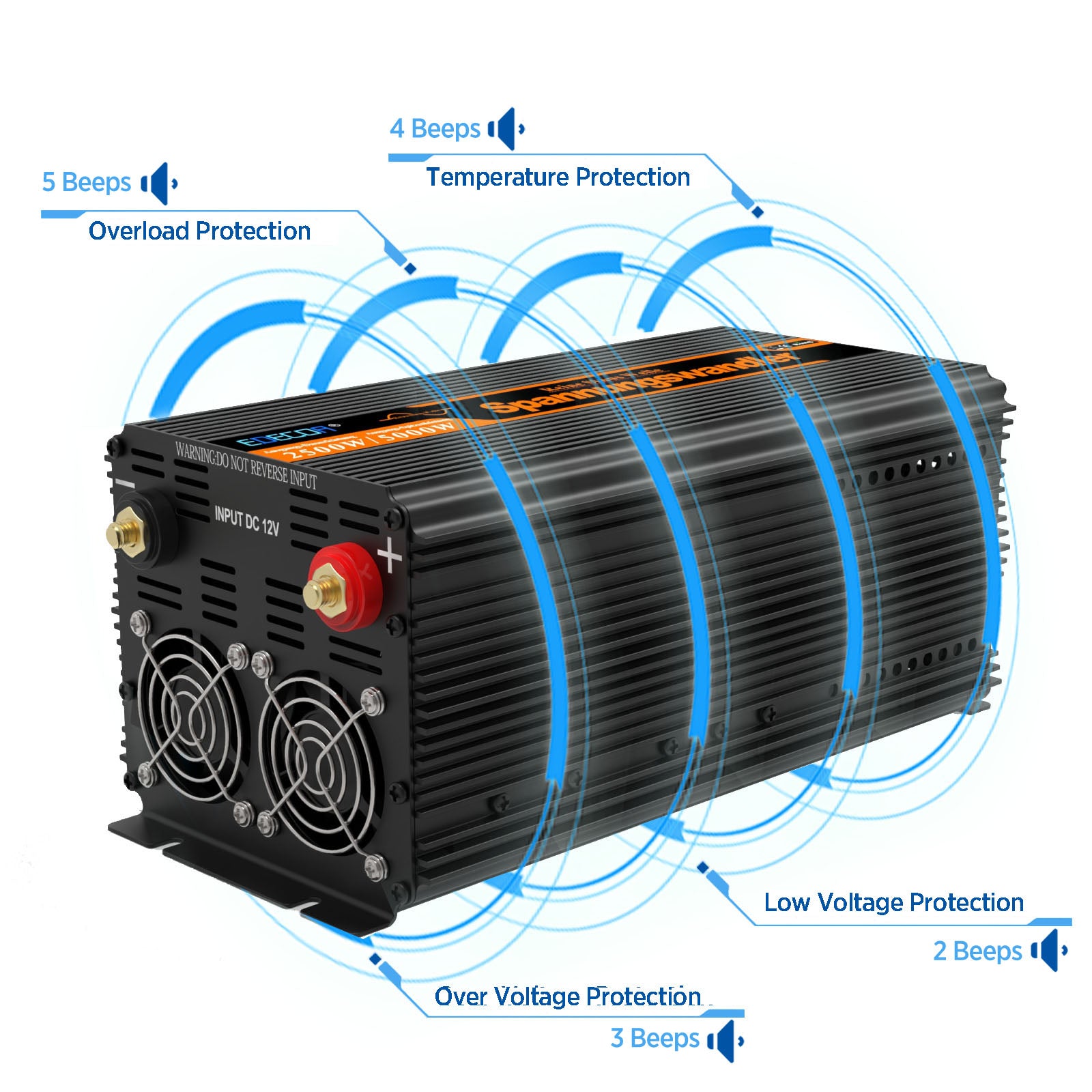In modern energy systems, inverters play a crucial role as key components that convert DC power to AC power, providing stable and reliable energy to our electrical devices. However, inverters are not just simple converters; they are equipped with various protection and monitoring functions to ensure the safe operation and maximum efficiency of the system.

1. Overload Protection: The inverter intelligently monitors the load current, and when it exceeds the rated power continuously, the inverter will shut down, accompanied by an alarm and indicator lights.
Let's say you have installed an inverter with a rated capacity of 3 kilowatts (kW). Then, you connect a device with a power rating of 2.5 kW to the output port of the inverter.
Under normal circumstances, the inverter will provide a power supply of 2.5 kW based on the load requirements of the device. However, if you add another load that increases the load current beyond the rated capacity of the inverter, for example, 3.5 kW, the overload protection mechanism of the inverter will be triggered.
If the load current exceeds the capacity of the inverter, it will disconnect the output connection and stop supplying power to the load device. This prevents excessive current from damaging the inverter and the load device, ensuring the safe operation of the system.
2.Short Circuit Protection: The inverter is capable of quickly detecting short circuits at the output terminal. When a short circuit occurs at the output terminal, the inverter will protectively shut down, accompanied by an alarm and illuminated indicator lights. This protection mechanism effectively safeguards the inverter and load devices from the hazards of short circuit faults.
3.Overvoltage Protection: The inverter not only monitors the stability of the input voltage but also recognizes excessively high input voltages. Once the input voltage exceeds the safe range, the inverter will automatically disconnect the power supply or reduce the output voltage to protect the system from voltage damage. However, if the input voltage is significantly higher than the rated voltage, for example, inputting 30V voltage into a 12V inverter, it will cause damage to the inverter.
4.Temperature Protection: The inverter is equipped with cooling fans that are controlled by an internal temperature sensor. When the internal temperature of the inverter exceeds 45°C, the fans start operating to dissipate heat and lower the working temperature of the inverter, preventing damage from overheating to the inverter and load devices. If the internal temperature of the inverter exceeds 75±5°C, the protection mechanism will automatically activate, shutting down the operation of the inverter and triggering an alarm, while the indicator lights illuminate to alert the user of the temperature anomaly.
5. Fault Diagnosis and Alarm: The inverter features fault diagnosis and alarm functions, capable of timely detecting the system's operational status and providing alerts or error codes. This enables users to quickly identify and resolve issues, ensuring the system can continue to operate efficiently.

The protection and monitoring functions of the inverter ensure the safety and reliability of the energy system, providing users with a better experience. The selection and configuration of the inverter are crucial. Our brand is committed to offering high-quality inverter products and continuously innovating and improving the protection and monitoring functions to meet customer needs.
By choosing our inverter products, you can confidently build and manage your energy system, enjoying a reliable and efficient power supply. We welcome you to visit our official website for more detailed information about the inverter's protection and monitoring functions, as well as our products and services.


Share:
Working principle of EDECOA high frequency sine wave inverter
How do I choose between a 12V and a 24V inverter?